

 The South African
The South African
This article is written by an ex-sailor who was recruited into the South African Naval Reserve in 1949 and was attached to what was then simply known as SA Rand. The base was opened around 1947/8 in an established building at Wemmer Pan, south of Johannesburg. It has been said that the original building belonged to the Navy League(1).
I was first called up to do my four-year Active Citizen Force (ACF) duty in 1948 and was initially attached to the Army(2). I immediately put in a request to be transferred to the Navy, which was granted, and in January 1949 the official call-up appeared in our Parkwood house post box. I was summoned to report to Witwatersrand Command at the Union Grounds, Joubert Park,for my medical.
Besides various tests we had to do the usual “cough” to ensure all was in order! I passed and was instructed to report to Wemmer Pan on a particular Monday night in February 1949.
In 1912 Union Defence Force (UDF) was comprised of PF (or permanent force), ACF (or active citizen force) on temporary conscription for 4 years and various cadet organizations. In 1961 the ACF was redesignated as the Citizen Force (CF)(3).
Efforts thus far in locating other SA Rand matelots serving at that time have been to no avail, so currently I am the only one who comes to light. My memory, as a nonagenarian,is reasonably good but if parts of this summary seem contradictory, my apologies but I have done the best I can! As always, photographs do help to jog one’s memory.(4)
As instructed, I and several others reported to SA Rand on the allotted night in February 1949 ready to start a twice a month Monday parade for four years. On the first night the Officer Commanding, Lt Commander (later Cdr) Owen, addressed the new recruits and spelled out what lay ahead. After the address we were directed to slops to draw a complete set of uniforms as well as a hammock, neatly packed in a bag. That intriguing item was required to be carried over our shoulders when we were despatched to our various camps. The matelot cap band simply read – SA.
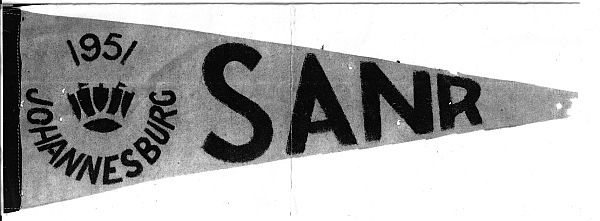
Figure 1 The original pennant
As radio was my teenage interest, I was assigned to Communications and set out to be a Seaman Telegraphist.
The base had an upstairs quarterdeck and in one of the rooms, after opening parade, we assembled to tap away at the morse code key and attend various seamanship lectures. We made no radio frequency transmissions as such, so our signalling went nowhere except to our headphones.
Although a telegraphist I was able to join the base bugle and drum band that had recently been formed. I cannot remember whether we practised the music on a Thursday night or if we were able to be relieved from our duties for an hour or so on a Monday. Who funded or provided the instruments I have no idea – that wasn’t our problem.
A highlight for the band was to parade at the Witwatersrand Agricultural Society (WAS) Rand Easter show. Our purpose was to march ahead of SA Rand gun crew towing their steel- wheeled cannon ready for the crew to put on a grand display by stripping their cannon and hauling it over a wall, reassemble it on the other side and finishing off with a fire (bang). When all was complete the band marched off with the Gunners astern to loud applause from the spectators.
Boat crews were often seen sailing around the Pan whilst other units were always busy with their allotted tasks. Marching to the sound of the Band was a regular occurrence when we were briefed by the Officer Commanding and at times the stern voice of the Gunnery Officer. We gave respect to a few ratings designated “candidate officers”. They were clearly distinguished by the “all-white” matelot cap that they wore. The candidates were preparing for Midshipman rank if they continued to serve in the navy. I had considered applying for the course but decided against it due to my impending departure for overseas.
Each year over the four years, a four-week away camp was mandatory. These would be at Salisbury Island and also, for telegraphists at Klaver Camp, situated on the top of Red Hill, near Simon’s Town. Klaver was an ex-Royal Navy hospital but now (at the time) turned into a communications and training centre.
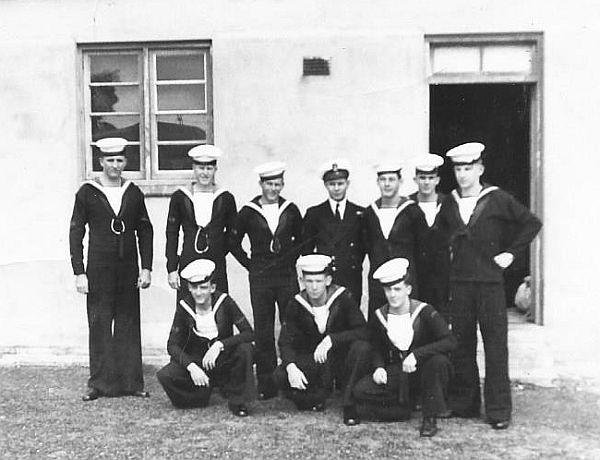
Figure 2 Klaver - Telegraphists from various units
On our first Salisbury Island training camp we went to sea. Some men were attached to HMSAS Bloemfontein and others on HMSAS Jan van Riebeeck (I was on JvR). There was no room for telegraphists in comms office so most of us were detailed to scrubbing decks and allowed to watch the main exercise involving the two ships scuttling barges with gunfire, depth charges and SAAF bombing. Lots of fun!
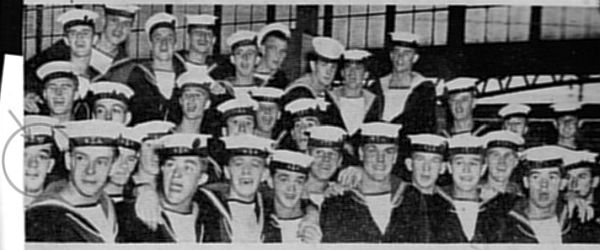
Figure 3 Back from our first camp
One exhausting exercise when at Salisbury Island was a full-strength Carley boat race across Durban harbour.
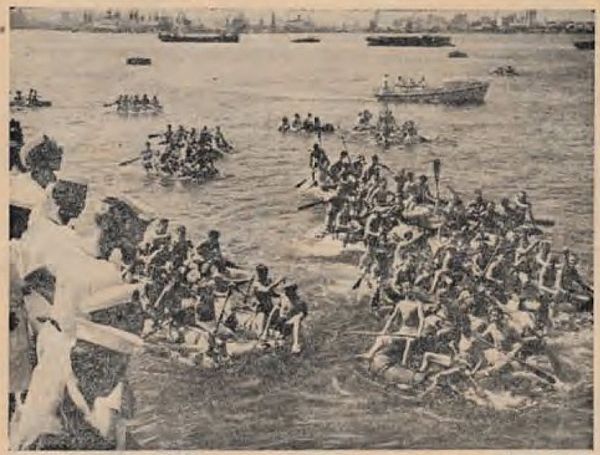
Figure 4 Durban harbour Carley Boat race
Carleys are no longer used in the Navy
My second last telegraphist camp was back at Klaver. The radio station had a 250ft lattice antenna further up the hill from the buildings. The antenna was a ground-mounted vertical monopole.
The height of the antenna indicates that it operated at low frequencies, perhaps in the kHz range, below the medium wave broadcast band(5).
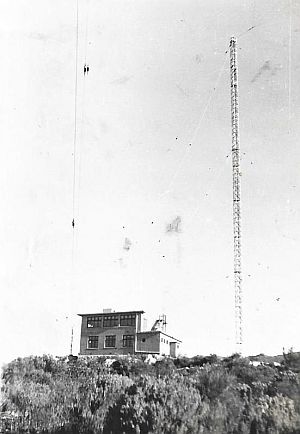
Figure 5 The “antenna with a view”
Shipping in those days used those low frequencies because they propagate very well over the sea - for hundreds of kilometres - and where this antenna was placed it gave a clear view far into the Indian and Atlantic oceans.
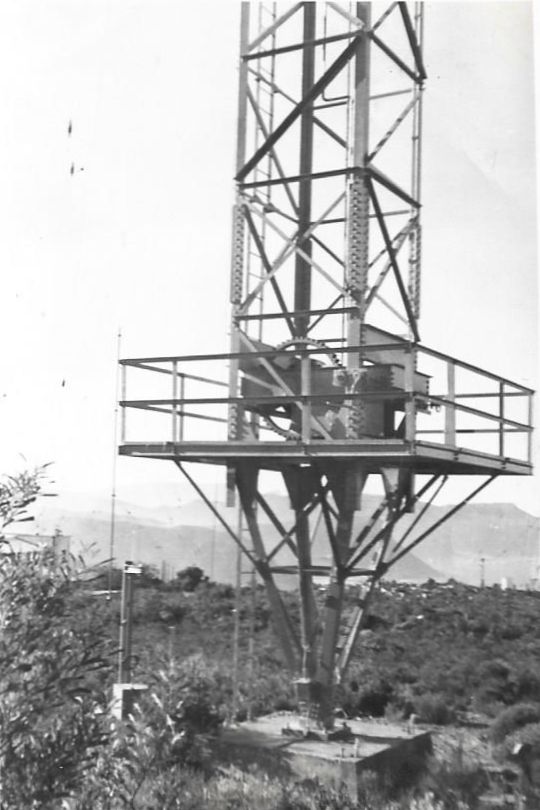
Figure 6 The base of the vertical monopole antenna
Besides training, my last camp also called for all military units to be mustered ready for rehearsals to prepare for a parade through the City of Cape Town on 6th April 1952 to mark 300th anniversary of the arrival of Jan van Riebeeck.
I was released from ACF duty as an AB Telegraphist in April 1952, which was shortly before my 4 years of service was up. The reason for me leaving before time was because I was going overseas to further my studies at Marconi in England.
There is no doubt that my navy service taught me humility, discipline, comradeship, how to work hard and move fast: wherever we went it had to be at the double!
From such humble beginnings SAS Rand, as it became, was at one time expanded to become the largest CF base in the country and the furthest naval base from the sea, anywhere.
References
(1) ... original building belonged to the Navy League – I Anderson
(2) Certificate of Registration Card No 16707. Call-up 1948
(3) Union Defence Force (South Africa) – Wikipedia broadcast band(5).
(4) KW Baker – memories and a host of photographs
(5) The height indicates that it operated at low frequencies ... Dr BA Austin
Return to Journal Index OR Society's Home page
South African Military History Society / scribe@samilitaryhistory.org